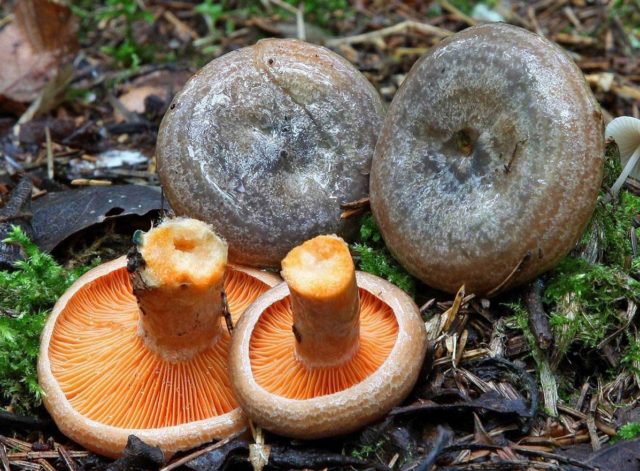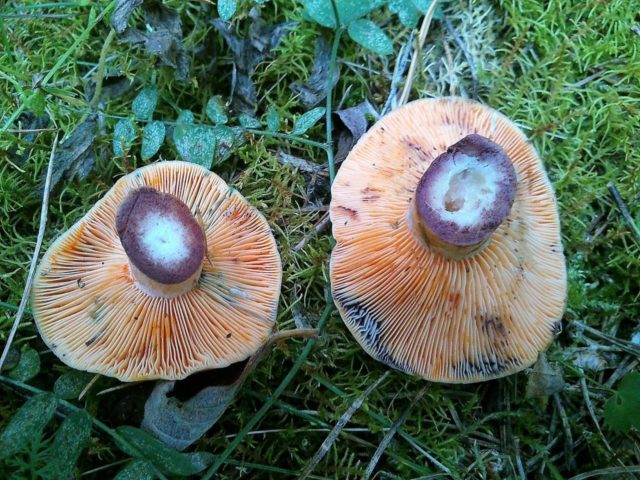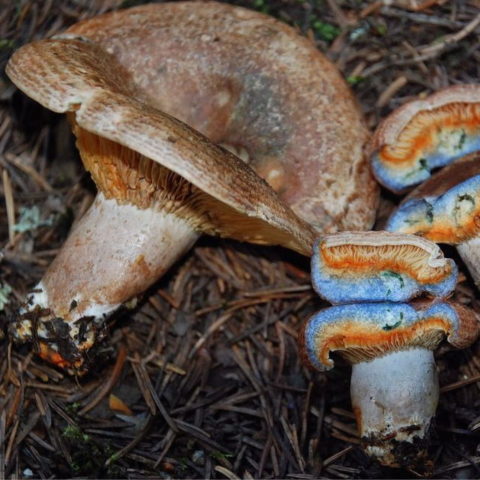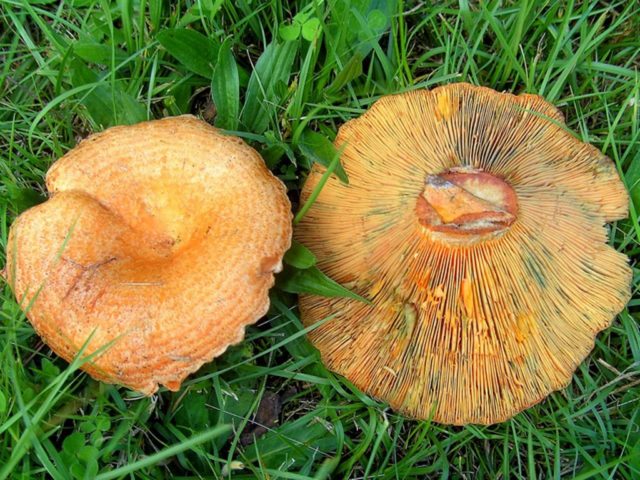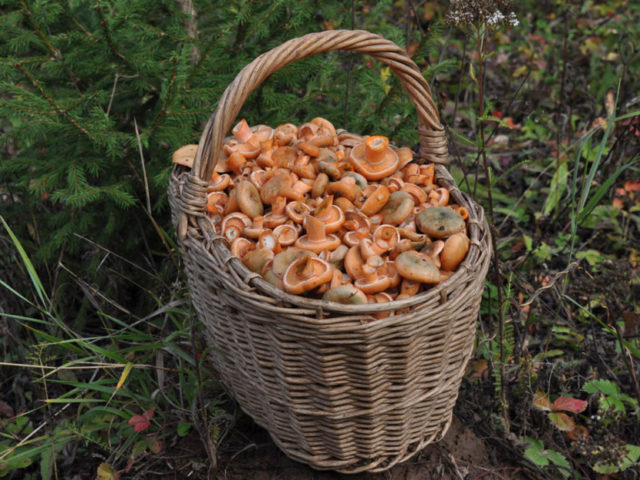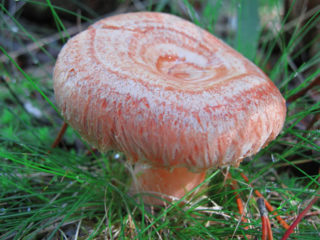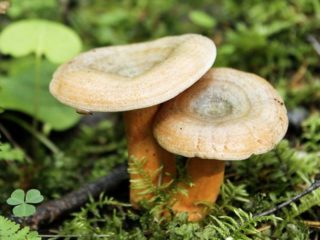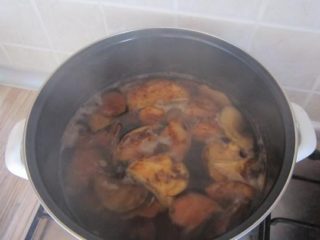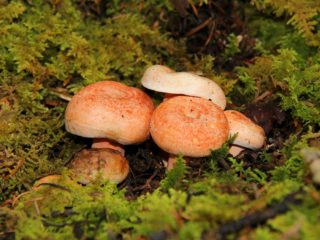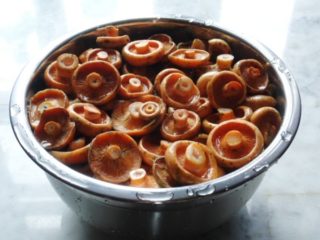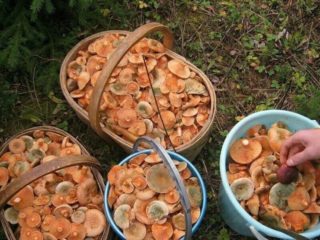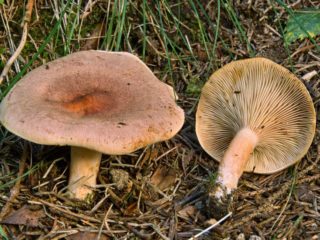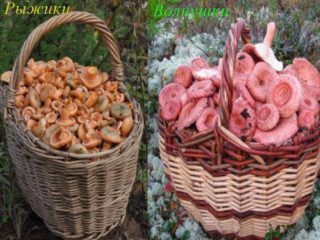Content
Saffron milk caps are rightly called royal mushrooms, as they are healthy, aromatic and look beautiful when preserved. But often inexperienced mushroom pickers are scared that saffron milk caps turn blue when cut and during pickling. There is no need to be afraid of this phenomenon, since this is a natural process that does not harm the human body.
Why do saffron milk mushrooms turn blue?
Mushroom pickers often notice that saffron milk mushrooms begin to turn blue when cut. They mistakenly believe that this process occurs only with poisonous specimens, and often pass by noble mushrooms. This is a misconception, since blue discoloration occurs as a result of oxidation when exposed to air. Mushroom pulp can change color not only to blue, but also to green, red or brown.
Why do saffron milk caps turn blue after picking?
Before going for a forest harvest, you need to know the varietal characteristics, time and place of growth, and also look at the photo. Saffron milk caps are a royal species that grows in dimly lit clearings, in young spruce and pine forests.
Red forest gifts are very difficult to confuse with other species, as they have a bright appearance. The cap is bright orange when young and has a hemispherical shape; with age it straightens and forms a small depression in the center.
The smooth surface has dark circles or spots, after rain it shines and becomes covered with mucus. The underside is formed by short, numerous plates, bright orange. The leg is short, fleshy, hollow inside. After mechanical damage, milky juice is released, and the cut becomes blue in color.
During mushroom hunting, inexperienced mushroom pickers are scared that the saffron milk caps have turned blue. This reaction occurs due to a chemical process. Substances contained in the pulp, when combined with oxygen, cause a color change. The knife blade can also cause oxidation, as a result the cut begins to quickly change color.
If after picking the saffron mushrooms turn blue, then there are spruce species in the basket. Since pine species secrete milky sap, which, when interacting with air, colors the pulp in a greenish tint. Inexperienced mushroom pickers often believe that false doubles have been collected and get rid of them. This is a natural process, so blued forest products are ideal for pickling.
Fruiting occurs from mid-August to late September. Often mushroom pickers go for saffron milk caps according to folk signs:
- If raspberries and blueberries have ripened in the forest and boletus mushrooms of the second layer have appeared, then in a month you can go hunting.
- Where boletus grew, red fruits of the forest appear in the fall.
- During the flowering of the heather, saffron milk caps begin to bear fruit.
Why do saffron milk caps turn blue when pickled?
The royal species is a tasty, healthy specimen that can be used for frying, stewing, and preparing salted and pickled preserves. But very often, when salting, housewives notice that the saffron milk caps have turned blue. This chemical process can occur due to spices and herbs, such as dill or its seeds. There is nothing dangerous in this, and the prepared dish does not pose a danger to the body.
Pickles can also turn blue if storage rules are not followed. They should be stored in a well-ventilated, cool room at a temperature of + 8-10 °C. If the temperature is below normal, the mushrooms freeze and begin to crumble. At high temperatures they will sour. If the brine evaporates, add salted boiled water to the container. If you follow simple storage rules, you can prevent the brine from turning blue.
What to do if saffron milk caps turn blue
Before salting, the blue saffron milk caps are sorted out, forest debris is removed, washed under running water and salting begins. To prevent the brine from acquiring a dark color, salting is carried out in enamel dishes, barrels or glass jars. Other dishes can cause oxidation, causing the color of the brine to darken and become unattractive. Also, to prevent the brine from changing color, do not use iodized salt for salting and do not add dill, its seeds and a large amount of spices.
If, out of ignorance, a large number of spices were used during pickling, and the brine darkened, then washing the mushrooms and pouring freshly prepared brine will help correct the situation.
To prevent saffron milk caps from turning blue when soaked in boiling water, add citric acid. But there are cases when the preparatory process went according to all the rules, and the flesh of the saffron milk caps still turned blue. This can happen due to the long exposure of the collected forest products under the sun's rays and in the open air. Therefore, many mushroom pickers start dry pickling right in the forest.
To prevent a chemical reaction from occurring during the preparation of pickles, it is better to prepare the dish in glass, portioned jars. Also, to prevent blueing and the harvest to look beautiful when preserved, it can be pickled. But to obtain a clear brine when boiling mushrooms, add a pinch of citric acid or the juice of ½ lemon to the water.
Salted and pickled saffron milk caps are stored in an airtight container in a cool room for no more than 12 months. If the brine suddenly darkens and black mold appears, the preserved food is thrown away, as it can cause irreparable harm to the body.
Conclusion
If during a mushroom hunt you come across a clearing of saffron milk caps, you can quickly collect a whole basket. But often mushroom pickers notice that saffron milk caps turn blue when cut, and after mechanical damage, milky juice is released. You should not be afraid of this reaction, since this mechanical process is natural and does not affect the taste, beneficial properties and aroma in any way.
